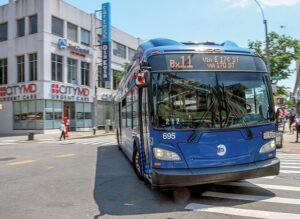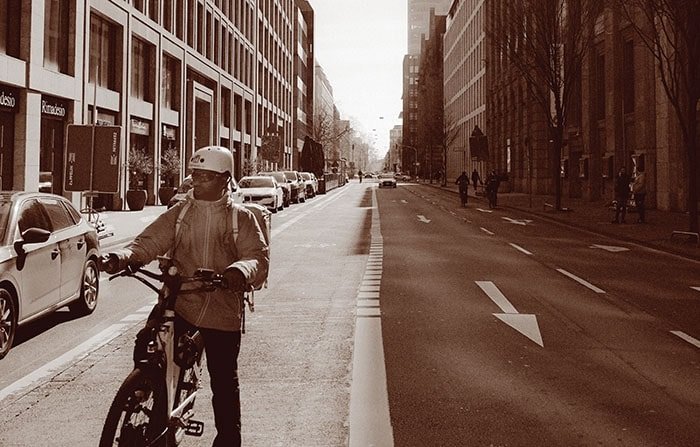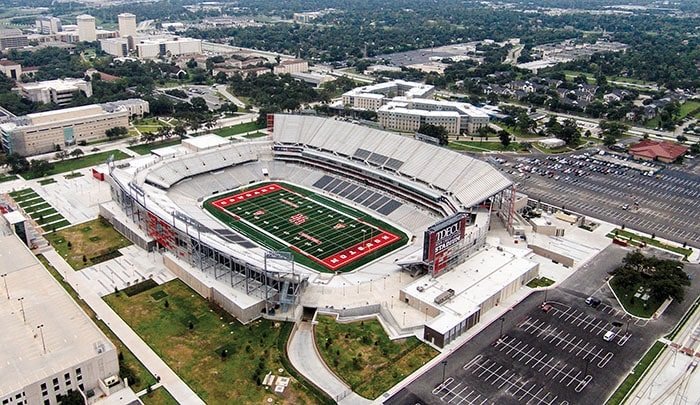The Smart City Movement Begins to Benefit from the Increasing Sophistication of Parking Technology
By Jay Landers
Across the world, urban centers increasingly are collecting, analyzing, and acting on data in real time to optimize operations, reduce costs, and improve services. These “smart cities” often seek to develop innovative public policies that achieve such goals as reducing environmental impacts, improving infrastructure performance, or increasing public safety.
For various reasons, parking historically has not been a top priority within the smart city movement. However, as the sector embraces more advanced technologies and greater digitalization, parking is expected to contribute much more significantly to efforts to improve urban life through better use of data.
Dealing with Data
Greater digitalization of city services is key to faster adoption of the smart city approach, said Sonny Samra, the vice president of North America for Cleverciti, a provider of integrated parking intelligence solutions. “If I had to summarize it in one sentence, I would say, ‘Just get digital,’” he said. “Whichever services you can get digital as quickly as possible, do that. Because once you get all the information, that’s how you can start becoming a smart city.”
The resulting data enable cities to act more efficiently and cost-effectively. “If a resource doesn’t need to be used, turn it off,” Samra said. “If assets aren’t being utilized fully, repurpose them. It’s that mentality, in my mind, that makes a smart city really a smart city.”
However, the smart city movement entails more than simply collecting data for its own sake, said Jordan Justus, the co-founder and chief executive officer of Automotus, a provider of curb management solutions. “Unless you’re using that information to make decisions to change things, I would say it’s not that smart,” he said.
Initially, many urban centers having the goal of becoming smart cities focused too much on data collection and not enough on how to use it, Justus said. But that trend is shifting now more toward the adoption of “more operational smart-city applications where companies and cities are figuring out business models and solutions that actually change the way that cities operate, through automating key operations,” he said.
Overcoming Obstacles

Photo courtesy of Marc A. Hermann / MTA
Parking has been slow to be incorporated into the smart city approach for various reasons, Samra says. A key reason, he said, is the myriad local parking ordinances and regulations that complicate efforts to develop generic approaches that can be quickly transferred from one city to another.
“It’s hard to do that with parking,” Samra said. “To get past those hurdles is a somewhat herculean effort. Then you’ve got to get the users to buy in and adopt the technology too. You can’t get as quick of a disruption as you would in other industries.”
Like most transportation-related activities, parking can involve multiple elected officials, departments, and interest groups within a single city. Working on something as complex as introducing smart parking initiatives requires engaging with all these stakeholders, some of whom will leave public office or change jobs during the time it takes to complete a project. These personnel changes complicate efforts to advance smart parking, Justus noted. “The hardest thing is just forming a true partnership with all of the stakeholders involved in advancing an initiative,” he said.
Another common obstacle involves the universal devaluing of parking by drivers, said Donald Shoup, a distinguished research professor in the Department of Urban Planning at the University of California, Los Angeles, and the author of the 2005 book The High Cost of Free Parking. “The main objection to smart parking is that everybody wants to park free,” Shoup said.
Even in cases when cities charge for parking, they often do so in a manner that causes parking assets to be “under monetized,” Justus said. For example, he noted that some cities charge less for on-street parking than garage parking, even though demand for on-street parking is higher. The failure to match price and demand precludes many “opportunities to self-fund the deployment of smart parking technologies,” Justus said.
Although technology lies at the heart of the smart city movement, technology is rarely the problem, Justus said. “I think policy, for the most part, is the biggest obstacle for cities,” he said.
In such cases, educating the public about the need for improved parking policies is key, Justus said. “As people understand the broader impacts of bad parking policy, they understand that they need to change it,” he said. These changes can generate revenue, which can be used to acquire and operate the necessary technology. “It’s a cycle that moves slowly,” Justus said. “But as you start to unlock some of these different gates, you can start to advance the deployment of this tech and make cities operate a little bit more efficiently.”
“Parking reforms are crucial to making cities smart,” Shoup said. To this end, cities should “remove off-street parking requirements, charge demand-based prices for curb parking, and spend the meter revenue to improve public services on the metered streets,” he said.
Despite parking’s somewhat slow rate of adoption in the smart city movement, Samra sees progress. “I think more and more cities are realizing that there is a path there, an incremental path to success, to getting to a smart city,” he said.
In some cases, adopting smart parking measures can help cities achieve even broader aims, Justus said. “Parking is that linchpin that connects or prevents cities from achieving some of these other goals around transportation and more broadly around economic development,” he said.
Charging Ahead on EVs
Looking to improve air quality and reduce carbon emissions, some U.S. cities and states have set ambitious goals for increasing electric vehicle (EV) adoption. Smart parking policies and practices will play a key role in achieving those goals, said Dan Sharplin, the chairman and chief executive officer of the parking and EV charging technology provider Flash.
For starters, many more EV chargers will need to be installed in readily accessible locations, Sharplin said. To succeed, that task will require the concerted efforts of off-street parking facility owners and operators around the country, he noted.
As EVs transition from a luxury product to an everyday product, “there’s going to be an enormous deployment of EV charging infrastructure,” Sharplin said. Because of electric grid constraints in urban areas, much of the EV charging infrastructure will take the form of standard level 2 charging stations, rather than the much faster — and more energy-intensive — level 3 charging stations, he said.
Meanwhile, “an increasing percentage of those vehicles will be owned by people who do not have a vehicle charger at home,” Sharplin said. “They will have to charge using shared infrastructure. A huge percentage of that infrastructure is going to happen in off-street paid parking facilities.”
Unfortunately, EV owners needing to use shared charging infrastructure too frequently face a “horrible experience” when it comes to finding available, properly functioning facilities, Sharplin said. High rates of vandalism and other problems often render charging stations inoperable, even when they are listed as available on apps used by drivers to locate chargers.
In some cases, drivers must pay to enter a parking garage, only to find out that a charger is unavailable or not functioning properly. “It’s an absolute crapshoot,” Sharplin said. “It’s a problem for the asset owners. It’s a problem for the parking operators. And it’s a huge problem for the drivers.”
This sorry situation reflects the fact that many existing chargers were “installed in kind of a ‘Field of Dreams’ build-it-and-they-will-come approach,” Sharplin said, rather than being constructed as part of an intentional system designed with the needs of EV users in mind. “All of that is going to have to become part of a dynamic network or it’s going to be abandoned and replaced,” he said.
Solving this problem requires increasing the reliability of the EV charging experience for drivers, parking operators, and asset owners, Sharplin said, rather than simply deploying more charging infrastructure. “The great news is the parking industry is well equipped to deal with that,” he noted. “We deal with enforcement and policing and inventory management all the time.”
This past May, Flash secured a $5.8 million grant from the California Energy Commission (CEC) for an EV charger demonstration project that will deploy at least 446 level 2 EV chargers in 2 years in a 1.5-mile area around downtown Oakland, California, where EV users are more likely to require publicly available charging stations.
“The success of the project would establish quality public charging as a standard among the practical, convenient, and environmentally friendly ‘smart cities’ of the future,” according to Flash’s May 2 news release announcing the grant.
L.A. Buses and LPR
Like broader EV adoption, greater use of mass transit is a key goal of many cities looking to reduce the environmental impacts associated with transportation. In most cities, the primary form of mass transit involves buses, the performance of which can be significantly affected by parking policies. Absent enforcement, improper parking practices such as double parking or parking in bus lanes or at bus stops can impede bus travel, lengthening commuting times, increasing emissions, and jeopardizing public safety.
Looking to crack down on these violations, the Los Angeles Department of Transportation (LADOT) is proceeding with efforts to deploy camera-based technology on L.A. Metro buses as part of an automated enforcement program. Last December, Hayden AI, a provider of artificial intelligence and geospatial analytics, announced that it had signed a contract with L.A. Metro to install enforcement camera systems on 100 buses operating on 5 bus lines.
In a July 29, 2024, memo to the Los Angeles City Council, the LADOT stated that the automated enforcement program was scheduled to begin in August 2024. Because it has a 60-day grace period, the program is expected to issue its first citation this November.
Equipped with license plate recognition (LPR) technology, the cameras on the buses will capture license plate information on vehicles that are parked in bus lanes and bus zones within the city’s jurisdiction. L.A. Metro will provide the violation information captured by these cameras to the LADOT, which is responsible for monitoring and enforcing parking violations in bus lanes. The LADOT will confirm valid violations and issue citations by mail, according to the memo.
The city agencies anticipate an annual volume of 108,000 citations. Of the resulting revenue, 75% will be apportioned to the L.A. Metro and the remaining 25% will go to LADOT. For its part, LADOT anticipates $5,472,596 in annual net revenue, according to the memo.
Learning from NYC
L.A. is not the first major U.S. city to operate an automated bus enforcement program. For example, New York City has had a similar program since 2019.
As of August 2024, the New York City Metropolitan Transportation Authority (MTA) had 623 buses on 14 routes conducting automated camera enforcement (ACE) of traffic violations in bus lanes and bus stops and double parking. By year’s end, 1,023 buses on 33 routes will be equipped with ACE technology. By comparison, New York City has nearly 6,000 buses and 331 bus routes.
Each bus corridor with ACE camera enforcement includes signage indicating that the routes are enforced by cameras.
“The technology is a combination of intelligent license plate recognition combined with off-bus violation evidence processing,” said Aaron Donovan, the deputy communications director for the MTA. “The total cost of the new technology was $141 million.”
Along with improving safety, the bus-mounted ACE technology provides other benefits, according to the MTA. “When enforcement cameras are activated, on average, routes see bus lane speeds increased by 5%, a 20% reduction in collisions, and a 5% to 10% estimated reduction in emissions,” according to an August 15 news release from the authority.
On August 19, New York City began sending summonses in the mail to the owners of vehicles found to be blocking bus stops or double parking. The summonses start at $50 and scale up to $250 for repeat offenders.
The MTA administers the ACE program in partnership with the New York City Department of Transportation (NYCDOT) and the New York City Department of Finance. “Once captured by the cameras, video, images, license plate, location and time stamp information are then transmitted to NYCDOT for review and processing, according to the MTA’s August 15 release. “Since 2019, NYCDOT has issued 438,660 notices of violations.”
The ACE program has improved driver behavior significantly. “We’ve noticed on routes where the program has been in place for some time, 77% of drivers who receive a ticket never receive another,” Donovan said. “Of the small percentage of drivers who do receive a second ticket, 91% of them never receive another.”
Smarter Parking to Come
Technology and data underpin the smart city movement. In recent years, technological innovation within the parking sector has reached new heights. “The parking industry has been creating new technology much faster than ever before,” Shoup said. “Digitizing the curb is a good example.”
With this trend expected to continue, cities will have ever more sophisticated tools and an increasing amount of parking-related data at their disposal. How they take advantage of these opportunities will determine in large part the extent to which cities become smarter about parking.
Jay Landers is the editor-in-chief of Parking Today.











